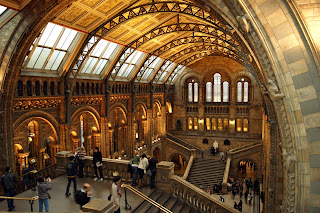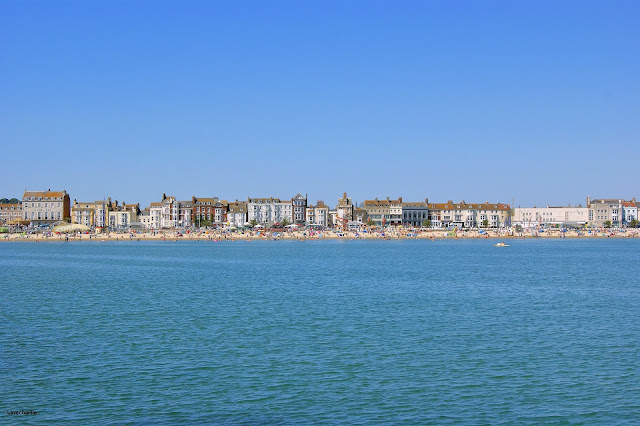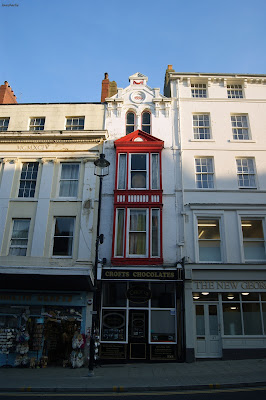An Evolution In Architecture
I have an interest in architecture, just a quick look through this blog should prove that! I don't know when or how it came about but it is something I have been passionate about for quite some time. To be more precise I have an interest in old architecture, Victorian, Edwadian, Art Deco, designs from eras when buildings had detail, I am not adverse to modern architecture but find it as a whole quite bland and boring, although I am aware of some more recent whimsical constructions.
My favourite design has to be the Natural History Museum in London, a place I have visited many times over the last few years both with family members and on my own. Entrance to the museum is free and if you plan your visit carefully and go during school hours then it is a lot quieter, not only are the displays interesting however but the museum itself is a masterpiece.
Although the museum opened in 1881 it's own evolution goes even further back. Following the death of doctor and naturalist Sir Hans Sloane in 1753 the government bought his extensive collection of over 70,000 items, to house and display these the British Museum was constructed, it opened in 1759, the current, amazing Greek Revival style building was built between 1823-1847, to soon became apparent however that the museum wasn't large enough to hold all of it's growing collections and so the idea of another museum dedicated to natural history was put forward by curator Sir Richard Owen.
In 1864 the architect Francis Fowke won a competition to design the Natural History Museum, his previous designs included the Royal Albert hall and parts of the Victoria and Albert Museum both of which are found in the same area, indeed the V&A is the Natural History Museum's neighbour. In a twist of fate however Mr Fowke died the following year so in came the now well respected but as of then virtually unknown architect Alfred Waterhouse.
In 1864 the architect Francis Fowke won a competition to design the Natural History Museum, his previous designs included the Royal Albert hall and parts of the Victoria and Albert Museum both of which are found in the same area, indeed the V&A is the Natural History Museum's neighbour. In a twist of fate however Mr Fowke died the following year so in came the now well respected but as of then virtually unknown architect Alfred Waterhouse.
 |
| If walls could talk these would roar |
Francis Fowke had insisted that the museum be decorated with natural history ornamentation, not only this but that specimens of extinct and living animals be kept apart, this from a time when Charles Darwin's theory of evolution was starting to become known and accepted. On the basis of this request Mr Waterhouse created a Romanesque masterpiece with the East Wing featuring examples of extinct species and the West Wing with living species, giving the building an almost Gothic appearance, relief sculptures not only adorned the walls of the museum but were incorporated into the columns and arches throughout the museum, the ceiling of the main hall is decorated with hand painted floral designs representing over 160 examples of plant life from pear trees and sunflowers to tobacco plants and opium poppies.
 |
| History in the shade of the Palm Tree, these columns were created to look like trees |
The museum now stands as one of the finest buildings in London, a great example of Victorian Architecture, a Grade l listed building, oh and of course a world famous museum too!
For more info on the museum check out this link
Natural History Museum
For more info on the building check out this link
Natural History Museum Architecture
For more info on Listed Buildings in England check out this link
Listed Buildings Of England
A Listed Building is one that is regarded as having architectural historical importance and can not be demolished or altered without permission by the government, the Secretary Of State, there are currently 376,470 of them in England, with the figure rising to nearly 500,000 across the UK.
For more info on the museum check out this link
Natural History Museum
For more info on the building check out this link
Natural History Museum Architecture
For more info on Listed Buildings in England check out this link
Listed Buildings Of England
A Listed Building is one that is regarded as having architectural historical importance and can not be demolished or altered without permission by the government, the Secretary Of State, there are currently 376,470 of them in England, with the figure rising to nearly 500,000 across the UK.





Comments
Post a Comment